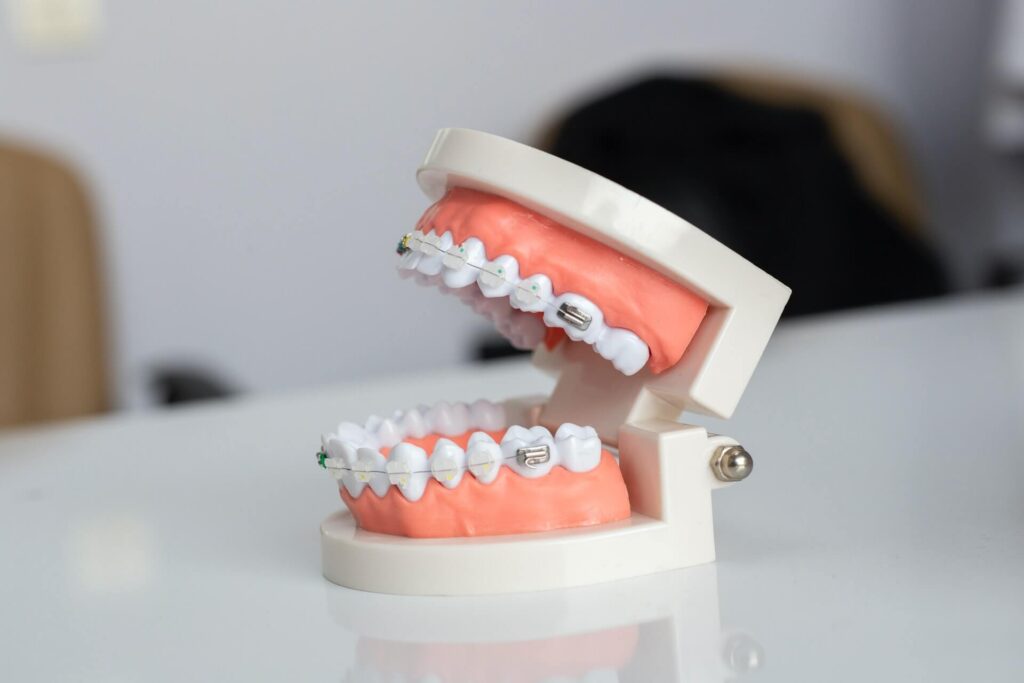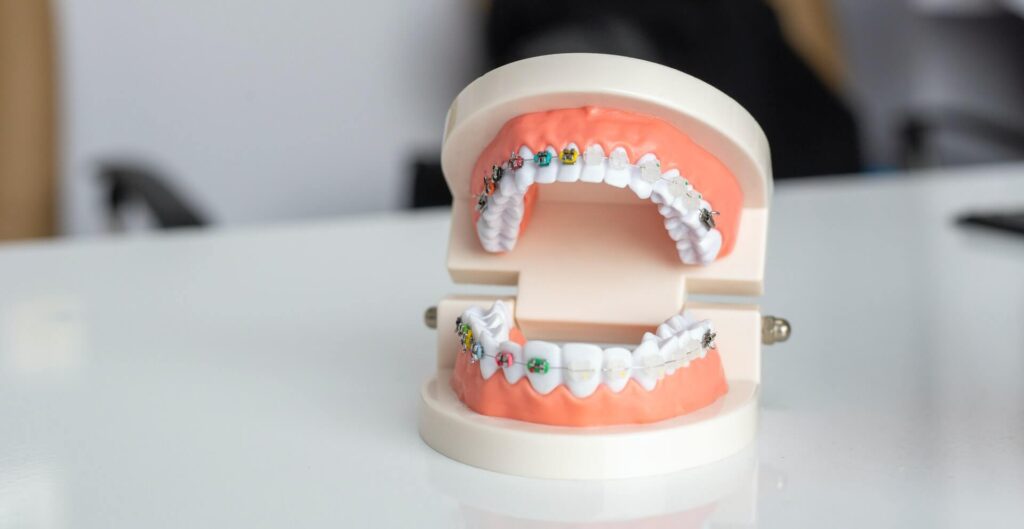It’s fairly well known that braces can make common daily tasks somewhat more difficult. Eating will definitely be one of those activities that are made more difficult. There are things you can do, however, to make braces more tolerable to wear.
What You Can’t (Or Shouldn’t) Eat With Braces
There are a few foods that are not compatible with braces, here they are:
- Chewy foods – bagels, licorice
- Crunchy foods – popcorn, chips, ice
- Sticky foods – caramel candies, chewing gum
- Hard foods – nuts, hard candies
- Foods that require biting into – corn on the cob, apples, carrots

What Can I Eat With Braces?
After your teeth adjust to your braces, chewing may be more manageable and will cause less discomfort. Your teeth may also become less sensitive to temperature if you are experiencing sensitivity.
Here are some soft foods that are safe to eat with braces:
- Soups
- Smoothies
- Scrambled eggs
- Yogurt, ice cream, and other soft dairy products
- Oatmeal, pasta, and other soft cereal products
- Soft vegetables, such as mashed potatoes
- Soft fruits, such as bananas
You should stick to these types of foods when you first start wearing your braces. Chances are, your teeth will be sensitive and may even be in some discomfort.
After you are more acclimated to wearing your braces you can begin to introduce more foods into your diet:
- Chewier cuts of meat
- Soft bread
- Citrus fruits

How To Eat With Braces
When you initially get your braces, your mouth will most likely be more sensitive than it usually feels. This is because your teeth aren’t used to the extra pressure that is applied by the braces.
- Continue to avoid hard and/or sticky foods
- Take small, careful bites
- Chew slowly
- Cut chewy foods into smaller pieces to make them easier to chew
- Avoid pizza crusts
- Don’t eat meat off the bone
Braces are relatively expensive, and if you break a wire, the pressure will be released, this means the braces will have to be fixed, and you will prolong the treatment unnecessarily.
How To Keep Your Braces Tight
You will want to keep your braces as tight as they should be the entire time you’re wearing them, while you probably can’t adjust them yourself, issues like food particles can get stuck in them and loosen the fit:
- Brush and floss regularly to keep up with oral hygiene
- Follow your orthodontist’s instructions
- Wear a mouthguard if you want to keep your braces protected while playing contact sports
- Contact your orthodontist as soon as possible if any problems occur or if you have concerns
The longer your teeth stay tight, the faster your treatment will be over. Following these instructions should be of high priority while you have your braces in.

Are There Different Types Of Braces?
Conventional Braces
Aligners
Aligners have been used for decades now, they can take longer to complete treatment than conventional braces. Aligners are best used for less severe adjustments. The main benefit is the ability to be removed by the patient, although they should be in your mouth for at least 22 hours or longer every day.
Self-Ligating Braces
These braces do away with the elastic bands that are in braces and just use a small wire that connects to a bracket on the tooth.
Lingual Braces
These braces are similar to conventional braces, except the bracket is placed on the back of the tooth instead of the front
If your adjustments are minor, and you don’t mind a slightly longer treatment duration then clear aligners may be a good fit for you.
